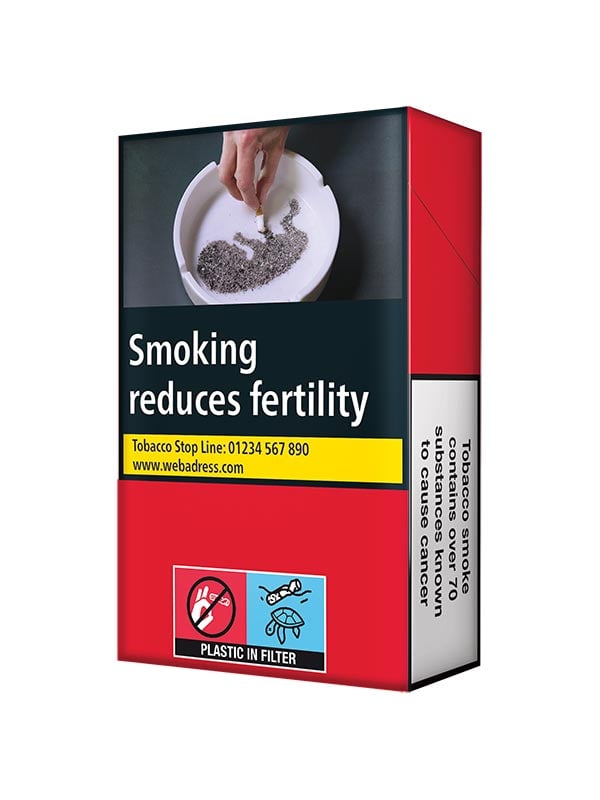Under the so-called Strategic Environmental Assessment Directive (SEA Directive), single-use products made from plastic are to be banned in the European Union from July 2021. Many other products that are either made from or contain a proportion of plastic are still permitted, however. These are to be labelled in future with a special warning notice. The notice will warn about the environmental damage caused by articles containing plastic.
From the 3rd of July 2021, products will have to integrate the aforementioned warning notice into the packaging design. Besides hygiene products, packs of cigarettes will have to bear this notice on their packaging too. Because many tobacco products are sold with a plastic-containing filter. There are also plastic-containing filters that are sold for use with other tobacco products.
In this article, we explain in detail what the Ministries for the Environment in many countries have planned, what this means for cigarettes and cigarette packs.
What EU are planning with respect to plastic product labelling.
Plastics don't just end up in the bin or getting recycled. Hygiene products, to-go cups and cigarettes are often discarded on the street and in public spaces – they sometimes may even find their way into the sewerage system. Products made of plastic and products that contain a certain proportion of plastic may thus be environmental issue. For this reason, the European Union resolved in the SEA Directive to ban a large number of disposable products from the 3rd of July 2021. Products that contain plastic but are not yet being banned will have to bear a label in future. This will warn of the environmental damage caused by the article.
Manufacturers are afforded a transitional period that ends on the 3rd of July 2022. During this period, non-removable labels may be applied to affected products.
What will the plastic warning notices look like?
Unlabelled products will no longer be produced from the aforementioned deadline in July 2021. Instead, plastic-containing articles must prominently display the warning notice in their existing packaging design.
The European Union envisages labelling consisting of both a pictogram and text. In this way, it should be immediately apparent to the consumer why the product in question contains plastic. The sample pictures that the European Commission published together with the SEA Directive make it easy to understand how to implement it: It is made visually clear that cigarettes with plastic filters should not be carelessly discarded, as they may be harmful to the environment and animals. The wording "Filter contains plastic" further summarises the warning in text.

What do cigarette filters have to do with plastic?
The filters used in cigarettes consist in part of cellulose acetate. This acetate is very long-lived and decomposes very slowly – often over the course of several years
But anyone who carelessly discards a cigarette is ultimately responsible for the residues concentrated in the filter ending up in the environment and groundwater. It's for this reason that the EU decided to include cigarette filters in the SEA Directive.
Warning notices for plastic: Cigarettes only affected to a limited extent
It's obvious that the environment has to be supported and plastic waste – in whatever form – must be reduced. Landewyck is conscious of the fact too, and is working on products and solutions that contain fewer plastics and are kinder to the environment. The warning notices for plastic-containing products and the abolition of products made from plastic are an important first step in achieving this goal.
For the moment, cigarettes and cigarette packs are only affected by the labelling requirement in the SEA Directive. Time will tell whether alternative solutions to cellulose acetate cigarette filters are forthcoming and this acetate can be done away with altogether for the good of the environment.